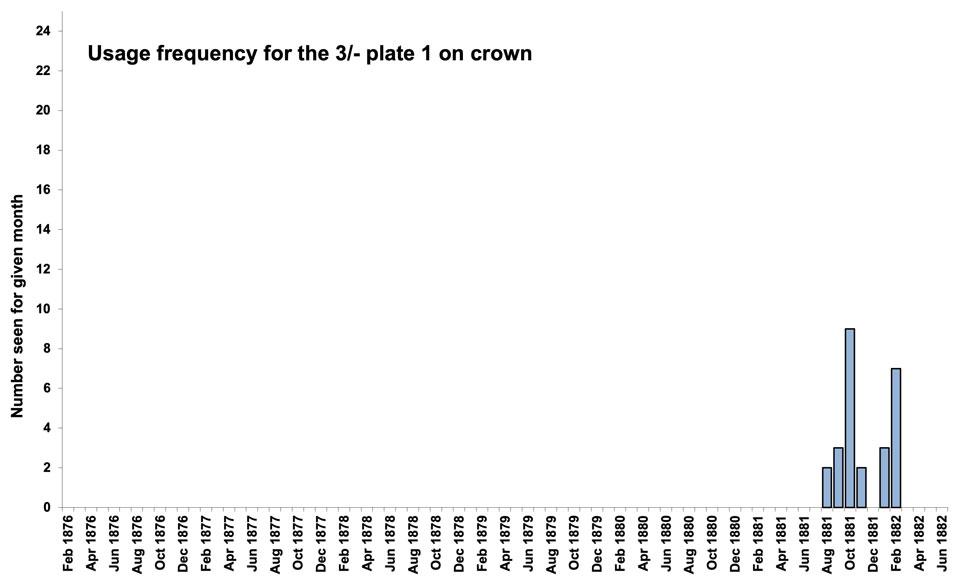1 Essays
2 Die Proofs
3 Sheet Layout
4 Plate Proofs
5 Paper
6 Imprimaturs
7 Colour Standards
8 Specimens
9 Issued Stamps
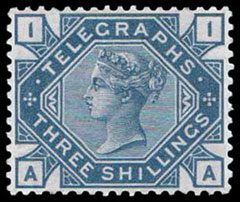
Date: Aug 1881
Plates: 1
Printer: De La Rue
Watermark: Crown (sideways-inverted)
Perforation: 14
In 1880 the Post Office decided to use one kind of paper for most standard sized postage and telegraph stamps. Imperial Crown paper was used upright for postage stamps starting with the 1880 “Provisional” issue, and hence sideways for telegraph stamps. The 3d, 6d, 1s, and 3s plates were altered to fit the new layout, and re-registered sheets were endorsed “Proof after alteration of Plate”. Since these were altered plates, there are no essays or die proofs. New telegraph stamps were issued in 1881.
Sheet Layout
The sheet had 240 stamps in two panes, arranged horizontally. Each pane had 120 stamps in 12 rows of 10. The margins had division ornaments, two hexagons between the panes and two half hexagons in the top, bottom, and side margins, marking the division into Post Office sheets of 20 stamps. There were no plate or current numbers. At the middle of each side was a small “T” used as a perforating guide.
A Post Office sheet was 20 stamps, valued at three pounds.
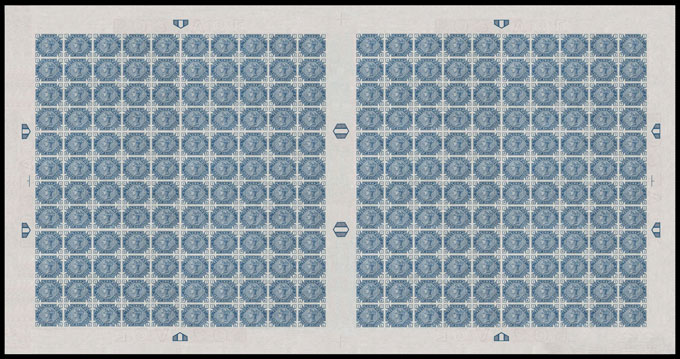
Computer generated image, click to enlarge.
Plate Proofs
There are no plate proofs for the altered plates.
Paper
From 1881, plate 1 was printed on Crown paper.
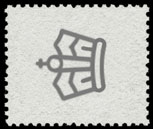
The watermark as seen from the front of the stamp.
For more details on Crown paper click here.
Imprimaturs
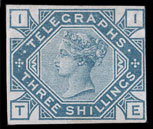
Plate 1 was re-registered on 29 July 1881.
The sheet was endorsed “Proof after alteration of Plate.” and
“Ordered that this altered Plate be brought into use.”
The registration sheets for the Telegraphs have been lost. However, we can reconstruct them from known examples and a clear pattern emerges. Most have a column of 12 taken, plus four from the adjacent column, and a plate number example from the opposite corner. One sheet of each value has an extra column of 12 taken.
Red represents an institutionalised example.
Green a known example in private hands.
Blue is unknown but predicted by the pattern.
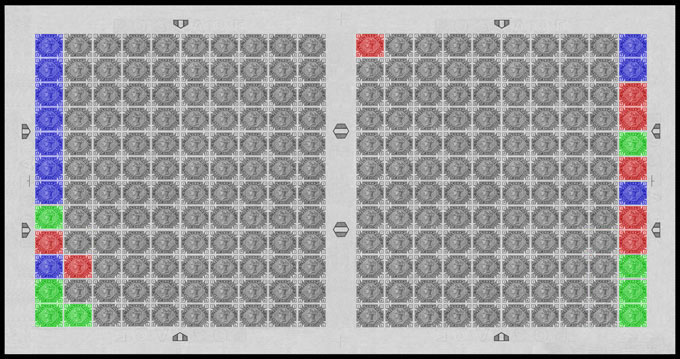
| Institutionalised/Total: | 8/27 |
| Royal Philatelic Collection: | TH, KA |
| British Postal Museum: | BJ* |
| German Postal Museum: | AI |
| Tapling Collection: | TC |
| Langmead Collection: | TI |
| Phillips Collection: | TD, TF |
* Listed as SJ in Langmead and Huggins, who also list SL in error for BL.
This sheet was missed in both the 1889 and 1890 removals, giving two less than the expected 29.
It can be seen that there are many unknown examples in this sheet reconstruction (in blue), especially from the first column. Yet the expected number of imprimaturs together with the known examples predict that these should exist. Examining the known mint stamps suggests where they have gone.
Wright & Creeke described the mint 3s on Crown as “an extremely scarce stamp” but now they are almost as common as the used stamps. More than half of the mint stamps known today come from the first column. This suggests that some imprimaturs have been perforated to look like mint stamps. There are thus fewer imprimaturs known than expected, and more mint stamps known than expected. Mint stamps should be viewed with suspicion if from the imprimatur positions of the sheet.
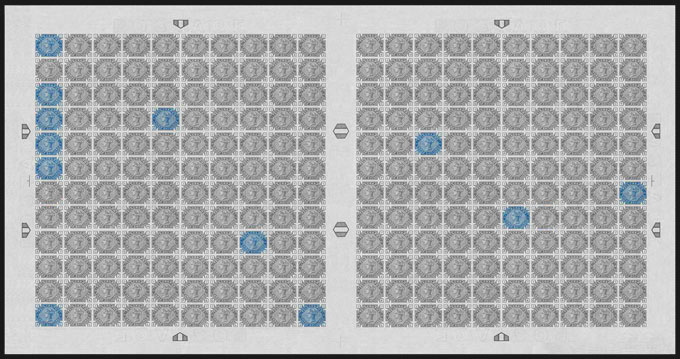 Known mint examples.
Known mint examples.
Colour Standards
There are no 3s colour standards on Crown paper.
Specimens
There are no 3s specimens on Crown paper.
Issued Stamps
Stamps were issued from plate 1 only.
The usage frequency graph shows that plate 1 was used from Aug 1881.
Click the graph to enlarge.
No postal, fiscal, or railway usage are known to us.
Issued Stamps — Plate 1
Plate 1 (current no. 523) was registered on 29 July 1881.
Some imprimaturs have been perforated to look like mint stamps (see “Imprimaturs” above). There are thus fewer imprimaturs known than expected, and more mint stamps known than expected. Mint stamps should be viewed with suspicion if from the imprimatur positions of the sheet.
Scarcity #34 in mint telegraphs, #37 in used telegraphs.
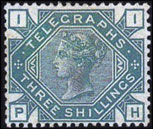
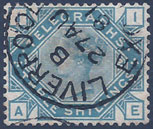
Mint stamps are rare. There are no mint multiples.
Used stamps are rare, the rarest of all the used telegraphs. The earliest known used example is often stated as 19 Aug 1881, but this has not been seen by us. The earliest date in our database is 27 Aug 1881 at Liverpool Exchange (illustrated).
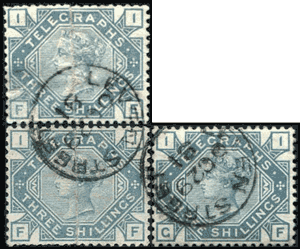
No used multiples are known to us, but these three stamps look as if they were once part of a block of three or possibly four.
No upright (sideways) watermarks are known to us. All are sideways-inverted.
